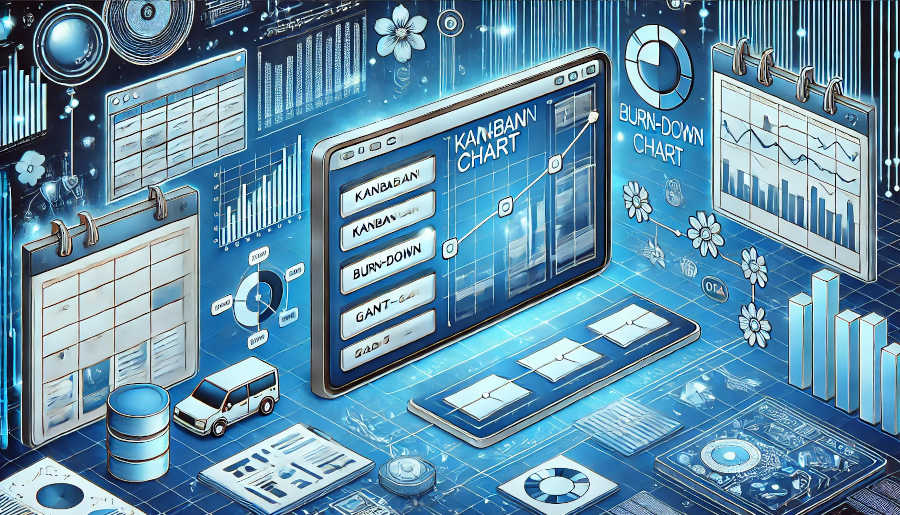The Role of the IPD Flowchart in Complex Projects
The IPD flowchart serves as a visual representation of the project's lifecycle, detailing the sequence of activities, decision points, and interactions among stakeholders. In complex projects, where the sheer volume of tasks and interdependencies can be overwhelming, the flowchart provides a clear roadmap that guides the team through the project's phases. It helps in identifying potential bottlenecks early in the process, allowing for proactive management and mitigation of risks. Moreover, the flowchart fosters a shared understanding among team members, ensuring that everyone is aligned with the project's objectives and timelines.
One of the key advantages of the IPD flowchart is its ability to facilitate communication and collaboration among diverse stakeholders. In complex projects, where multiple disciplines and organizations are involved, effective communication is often a challenge. The flowchart acts as a common language, enabling stakeholders to visualize their roles and responsibilities within the project. This shared understanding not only enhances coordination but also reduces the likelihood of misunderstandings and conflicts. Furthermore, the flowchart can be used as a tool for continuous improvement, allowing teams to reflect on their processes and identify areas for optimization.
However, the implementation of the IPD flowchart in complex projects is not without its challenges. One of the primary difficulties lies in the initial setup of the flowchart, which requires a deep understanding of the project's scope, objectives, and constraints. This process can be time-consuming and resource-intensive, particularly in projects with a high degree of uncertainty. Additionally, maintaining the flowchart throughout the project's lifecycle can be challenging, as it requires regular updates to reflect changes in the project's scope, schedule, and resources. Despite these challenges, the benefits of using the IPD flowchart in complex projects far outweigh the costs, making it an indispensable tool for project managers.
Best Practices for Implementing the IPD Flowchart
To maximize the effectiveness of the IPD flowchart in complex projects, it is essential to adhere to a set of best practices. First and foremost, project managers should ensure that the flowchart is developed collaboratively with input from all key stakeholders. This collaborative approach not only enhances the accuracy of the flowchart but also fosters a sense of ownership among team members. It is also crucial to keep the flowchart as simple and intuitive as possible, avoiding unnecessary complexity that could hinder its usability. A well-designed flowchart should be easy to understand and navigate, even for stakeholders who are not intimately familiar with the project's details.
Another best practice is to integrate the flowchart with other project management tools and methodologies. For instance, the IPD flowchart can be used in conjunction with agile methodologies to manage iterative processes and adapt to changing requirements. Similarly, it can be linked to risk management frameworks to identify and mitigate potential risks throughout the project's lifecycle. By integrating the flowchart with other tools, project managers can create a comprehensive management system that addresses all aspects of the project. Additionally, it is important to regularly review and update the flowchart to ensure that it remains relevant and accurate. This ongoing maintenance is critical for keeping the team aligned and ensuring that the project stays on track.
Finally, project managers should leverage technology to enhance the functionality of the IPD flowchart. Modern project management software offers a range of features that can streamline the creation, maintenance, and sharing of flowcharts. For example, cloud-based platforms allow team members to access the flowchart in real-time, facilitating collaboration and communication. Additionally, advanced visualization tools can be used to create dynamic and interactive flowcharts that provide deeper insights into the project's progress. By embracing technology, project managers can unlock the full potential of the IPD flowchart and drive project success.
The Impact of the IPD Flowchart on Project Outcomes

The practical application of the IPD flowchart in complex projects has a profound impact on project outcomes. By providing a clear and structured framework for managing the project, the flowchart helps to reduce uncertainty and improve decision-making. This, in turn, leads to more efficient resource allocation, faster problem resolution, and ultimately, higher project success rates. Moreover, the flowchart's emphasis on collaboration and communication fosters a culture of teamwork and shared responsibility, which is essential for navigating the complexities of large-scale projects.
One of the most significant benefits of the IPD flowchart is its ability to enhance transparency and accountability. In complex projects, where multiple stakeholders are involved, it is crucial to maintain a high level of transparency to ensure that everyone is aware of the project's status and progress. The flowchart provides a visual representation of the project's activities and milestones, making it easier for stakeholders to track progress and identify any deviations from the plan. This transparency not only builds trust among team members but also enhances accountability, as everyone can see their contributions to the project's success.
Furthermore, the IPD flowchart plays a critical role in risk management. By identifying potential risks early in the project's lifecycle, the flowchart enables project managers to develop proactive mitigation strategies. This proactive approach reduces the likelihood of costly delays and disruptions, ensuring that the project stays on schedule and within budget. Additionally, the flowchart's ability to facilitate continuous improvement allows teams to learn from their experiences and refine their processes, leading to better outcomes in future projects. Overall, the IPD flowchart is a powerful tool that can significantly enhance the success of complex projects.
In conclusion, the practical application of the IPD project flowchart in complex projects is a game-changer for project management. Its ability to provide a clear roadmap, foster collaboration, and enhance transparency makes it an indispensable tool for navigating the complexities of large-scale projects. By adhering to best practices and leveraging technology, project managers can maximize the effectiveness of the flowchart and drive project success. As the demand for complex projects continues to grow, the IPD flowchart will undoubtedly play a central role in ensuring their successful delivery.
FAQ
1.What is the primary purpose of the IPD flowchart in complex projects?
The primary purpose of the IPD flowchart in complex projects is to provide a visual representation of the project's lifecycle, detailing the sequence of activities, decision points, and interactions among stakeholders. It serves as a roadmap that guides the team through the project's phases, helping to identify potential bottlenecks, facilitate communication, and enhance coordination among diverse stakeholders.
2.How can project managers ensure the successful implementation of the IPD flowchart?
Project managers can ensure the successful implementation of the IPD flowchart by following best practices such as developing the flowchart collaboratively with input from all key stakeholders, keeping it simple and intuitive, integrating it with other project management tools, regularly reviewing and updating it, and leveraging technology to enhance its functionality.
3.What are the key benefits of using the IPD flowchart in complex projects?
The key benefits of using the IPD flowchart in complex projects include reducing uncertainty, improving decision-making, enhancing transparency and accountability, facilitating risk management, and fostering a culture of teamwork and shared responsibility. These benefits contribute to more efficient resource allocation, faster problem resolution, and ultimately, higher project success rates.
ARTICLE TITLE :The practical application of the IPD project flowchart in complex projects ,AUTHOR :ITpmlib

















